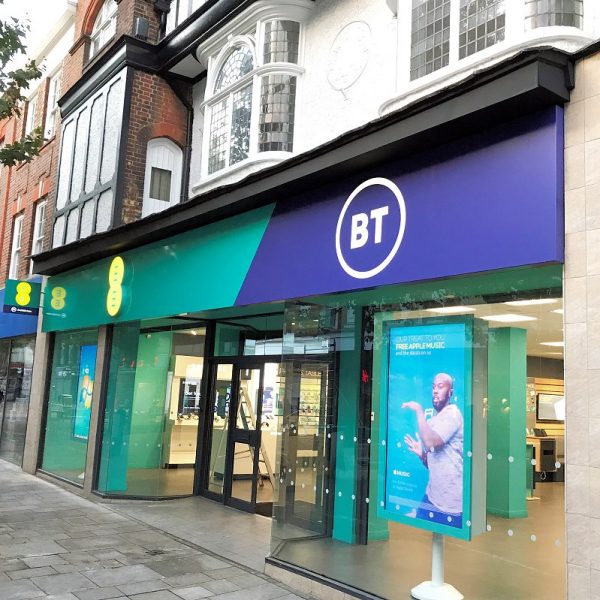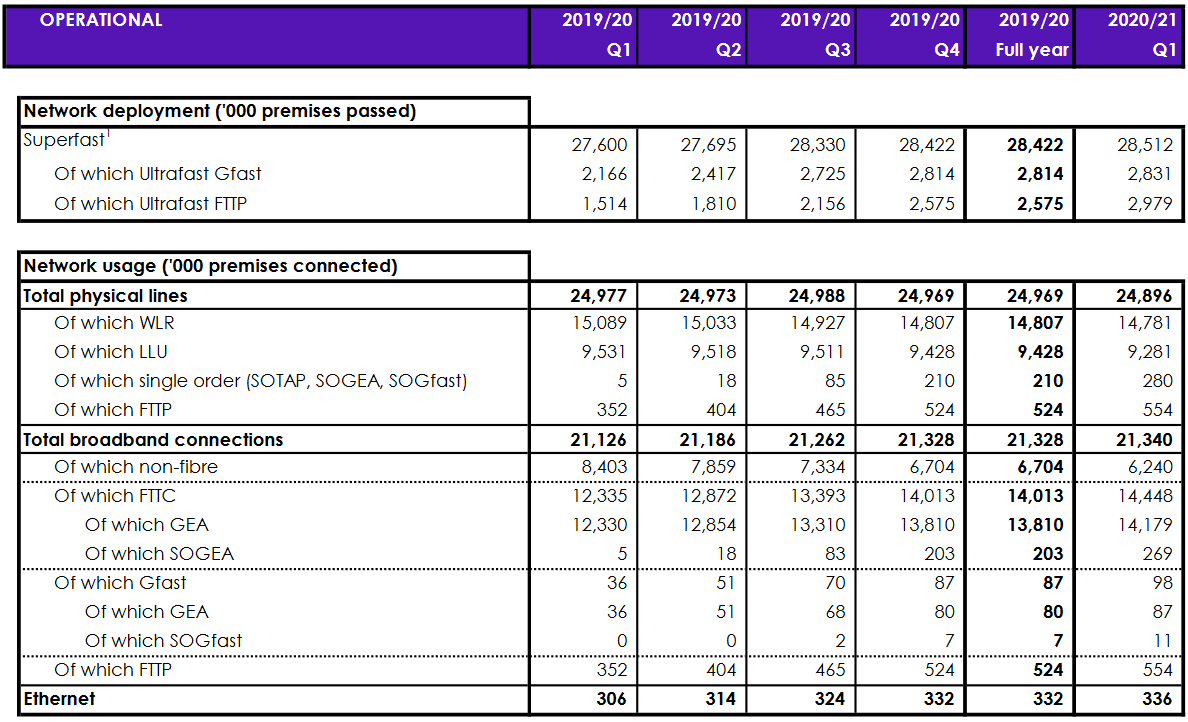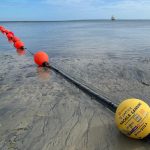BT Raise UK Ultrafast Broadband Cover to 5.81 Million Premises

BT has today published their Q1 2020/21 results, which reveals that Openreach has expanded their “ultrafast broadband” ISP network to cover 5.81 million UK premises (up from 5.4m last quarter) and that includes 2.98m on FTTP (up from 2.57m) and 2.83m on G.fast (up from 2.81m). Plus 5G via EE is now live in 100 cities and towns.
Broadly speaking most of the news since BT’s last quarterly update has tended to focus on the strong progress being made by Openreach to roll-out Fibre-to-the-Premises (FTTP) technology across the United Kingdom (examples here, here and here). Similarly EE has also continued to expand their 5G mobile network to more areas, although the Government’s move to ban Huawei from new 5G deployments will cause delays (here).
Otherwise the main developments over the past quarter have included an expanded FTTP supplier agreement with Nokia (here) and the addition of ADTRAN as a third strategic supplier for that same network (here). On top of that Openreach has tried again to deploy G.INP on to FTTC lines (here) and confirmed that their roll-out of hybrid fibre G.fast technology will remain shelved for at least the next year (here).
Advertisement
Most recent BT has also scooped another contract to help extend FTTP vs Openreach across more of Wales (here), which is worth £30m and should reach an additional 13,000 premises in mostly rural areas. We should also add that Openreach intend to stop selling copper products to c.1.2m FTTP enabled premises in 117 exchange areas from June 2021 (here); Ultrafast services (including FTTP and Gfast) will be available to more than 75% of premises in these locations by that date.
Financial Highlights – BT’s Quarterly Change
* BT Group revenue = £5,250m (down from £5,632m)
* BT Group profit after tax = £448m (up from £208m)
* BT Group total net debt = £18,157m (increased from £17,969m)
The KPIs for BT’s results also reveal that the total gross BDUK grant funding deferral (clawback) included in capacity/network was £788m (unchanged). This reflects public money that can often be returned by BT and reinvested by local authorities to help boost “superfast broadband” coverage (currently at nearly 97% for 24Mbps+). A good chunk of this has already been re-invested into such contracts.
Sadly BT no longer provide customer figures for their own retail broadband ISP, although we note that 81.8% of their consumer broadband base now take a “superfast broadband” service (up from 79.7% last quarter – mostly FTTC) and this drops to just 2.5% (up from 2.4%) for their “ultrafast broadband” (FTTP/G.fast) products. We’re a little bit surprise that ultrafast isn’t growing faster.
Openreach’s Network
The table below offers a breakdown of fixed line network coverage and take-up by technology on Openreach’s national UK network, which covers the totals for all ISPs combined (e.g. BT, Sky Broadband, TalkTalk, Zen Internet, Vodafone etc.).
Advertisement
Otherwise the roll-out of full fibre lines remains the dominant one amongst the two “ultrafast” technologies, with FTTP adding +404,000 premises (down from +419,000 last quarter) and hybrid fibre G.fast adding just +17,000 premises (down from +89,000 last quarter).
We should point out that the increase in FTTP coverage is particularly notable given that the April – June period was heavily affected by COVID-19, which makes this outcome more impressive than it may seem. Meanwhile G.fast was placed under review last year (here) and its roll-out has now been suspended in favour of FTTP (this will be reviewed again in March 2021 but is unlikely to change).

The results also confirm that take-up of FTTP is now 18.6% (down from 20.35% last quarter), while G.fast stands at just 3.46% (up from 2.84% last quarter). But such figures don’t tell the whole story since, until recently, both technologies had been ramping up their deployments, which means adoption is likely to trail (i.e. it’s dynamically impacted by lots of factors like consumer choice, awareness and deployment pace).
Advertisement
We expect to see take-up of G.fast climb now that its roll-out has effectively stopped, while Openreach’s plan to ramp-up their FTTP deployment (target to cover 20 million UK premises by around 2025-2030) will continue to reduce the take-up measure until their build slows down. The only real way to examine take-up is to only examine areas where a technology has been live for 12 and 24 months or longer, but such data is not provided above.
Philip Jansen, CEO of BT Group, said:
“Despite Covid-19, BT delivered a strong operating performance in the first quarter and delivered a relatively resilient set of financial results. We continue to invest in the long-term future of the business. We continued to support our customers and colleagues through the crisis, including offering NHS workers on EE unlimited mobile data, and discounts for pubs and clubs on BT Sport until the end of the year.
During the quarter Openreach resumed provisioning and repair activity in customer premises, we re-opened the majority of our retail stores, and we saw the restart of the Premier League on BT Sport. Enterprise has today launched the BT Small Business Support Scheme, which will boost cash flow, connectivity and confidence among this critical segment of the economy over the coming months.
Throughout this crisis we remain focussed on delivering against our strategic goals to deliver long-term value for shareholders. We reached an important milestone with 3m FTTP premises now passed, welcomed Ofcom’s consultation on our rural FTTP build proposal, and have now deployed 5G to 100 towns and cities. Together with continued improvements in customer experience and our modernisation programme, we are positively positioned for the future.
Although uncertainties remain, we are now able to provide an outlook for this financial year. Despite our strong operational performance in the first three months of the year, it is clear that Covid-19 will continue to impact our business as the full economic consequences unfold. Beyond this year and based on current expectations, we expect to return the business to sustainable adjusted EBITDA growth, driven in part by the recovery from Covid-19.”
Finally, we should add the operator’s new 5G based mobile broadband network (EE) has now started to go live in parts of 100 UK towns and cities (up from 80 in May 2020). Separately, Openreach confirms they’re “on track” to reach 4.5 million premises passed by FTTP in time for their end of March 2021 target.
Elsewhere, the 7% fall in quarterly revenue is said to be “primarily due to the impact of Covid-19, including reduced BT Sport revenue and a reduction in business activity in our enterprise units.”
Mark is a professional technology writer, IT consultant and computer engineer from Dorset (England), he also founded ISPreview in 1999 and enjoys analysing the latest telecoms and broadband developments. Find me on X (Twitter), Mastodon, Facebook, BlueSky, Threads.net and Linkedin.
« NETGEAR Decline to Patch Security Flaw in 45 Routers and Modems






















































Fantastic to see FTTP pass G.fast in terms of coverage. While it was an error it is being remedied which is good.
Everyone is allowed to make mistakes. Making them good is what matters.
Keep up the momentum, BT! Great news.
Should see the fttp connections increase next month as the engineers have not been able to enter the properties to install the ont for a lot of the previous quarter. fttp was installed on pole outside my house 2 weeks ago hopefully it will go live soon!
Good to see BT is finally making some progress though it should have been there more than a decade ago.
The majority of this country still has no fibre broadband.
Do feel free to change the record.
Blame Margaret Thatcher for having 30 years of no fibre (she blocked bt from replacing the copper network in 1992, bt was going to do it off there own backs, own UK factory’s and equipment)
Ctri-c
Ctrl-v
@Leex
Yes, correct and apparently it was to pamper to the american cable companies I believe.
History now repeating itself.
Openreach and bt are not as good as they make out till waiting for fibre in my area IP28 8BT.
that would be the same postecode as it says already has FTTC
All this talk of Ultrafast Broadband, is really making me feel so Sad. As my speed is only 0.18 mbps yes thats correct, and I’ve been told by BT I will Never get Fibre, because where I live.
Thank you Mr Philip Janson, from someone who has been a Customer for over 50 years…
Thank You.
have you actually checked on the openreach website to see if you postcode is covered by any of the rural or government builds recently
be interesting to understand who you spoke to and whether they were qualified to make that comment
We have FTTP passing through our village but BT have no plans to connect us, our villages we ‘descoped’. Instead, we’ve been advised to club together and pay Openreach using the Community Fibre Partnership scheme. Presume I’ll get free broadband after paying for the infrastructure then? No? Didn’t think so.
the CFP enables the co funding with Openreach of the infrastructure build only to enable the build to happen. – once the build is in place you still have to purchase a service in the same way as any one else has to and if you dont and the build has taken place you will remain as you are
What im finding is people dont need 1000 meg. They are happy with fttc. Only the very few that want more
People demand cheap not speed.
Which is why altnets start off trumpeting gigs and end up selling megs that are slower than FTTC.
You are correct I do not need 1000 Mbs, however I would like something a little faster than sub 24Mbs fttc, 40 Mbs would be nice.
What speed are you getting?
FTTP grows by 0.4m in a quarter, or 1.6m per year. With 27m homes in the UK remaining, if they keep up this rate, we should have full coverage by 2037, yay!!
BTs net debt now stands at a hefty £18.2bn, up £200m from 31 March. It won’t pay dividends until at least the 2022 fiscal year. It also has to remove all of its Huawei kit by 2027, which will cost a few more billions. Also, BT has to invest around £12bn on its fibre roll-out.
So realistically, given under these circumstances, you can’t expect miracles, it’s current rollout isn’t too bad.
The main criticism would be that large-scale fibre rollout should have started more than a decade ago. There are some users who still honestly believe that the early 1990s Thatcher government is to be blamed for this, which of course in non-sense. Nobody has prevented BT, or any other telecom, from rolling out fibre for many years now. Other factors like wrong or bad decisions of BT in the past, wrong government policies, an inefficient OFCOM (especially under Sharon White), and a sheer Can’t Do culture all contributed to this current situation. Still too much red tape, like wayleaves, fibre tax, etc, the list is endless. Not to forget the waste of building duplicate last mile fibre access networks in several places. You wouldn’t do that with water or gas pipes, or power lines. There is no proper coherent strategy in this country.
Copy/paste. Copy/paste.
reCAPTCHA on here would put the odd person into some peril.
NE555: Urggh. Remember the Vodafone/Cityfibre buildout too. Why do you have to be so negative? Sure, it’s important to keep up the pressure on our political class to accelerate this project as fast as we can. But in truth, the build is being conducted impressively quickly at the moment. You’re not going to move much faster than this in practice.
The huge stupidity of the way that FTTP is being sold for the home landline situation is BT (both Retail and Openreach/Wholesale) selling a fixed speed but with unlimited capacity and then charging a lot more for full speed activation of the fibre connection but also with unlimited capacity. Yet on mobile data the reverse situation prevails and you pay for what you use and do not pay for the maximum speed at which you can suck down data from the transmitter.
If instead FTTP home broadband was sold like gas and electricity just paying for what you consume with the same standing charge then everyone would take FTTP (where available) at full speed and pay for what they use and the investment in the FTTP would be fully utilised. However perhaps a reason that hasn’t happened is that the Openreach backbone network couldn’t cope with delivering the full speed the fibre is currently hobbled to (was 300Mbps and now 900/1000Mbps).
Also in addition a situation prevailed where Sky and TalkTalk were not incentivised to enter the marketplace by Ofcom while BT used FTTP to ripoff people on new housing estates with uncompetitive prices due to their happy monopoly supplier situation that Ofcom outrageously allowed. This made FTTP a Cinderella product that was seen as odd, expensive and not mainstream and greatly hindered takeup by properties that it passed.
With a rational marketing strategy I and all the other residents in Capel with FTTP passing our doors since 2015 would have been incentivised to switch to it straight away but because BT sold it as a super luxury broadband product the generally adequate 16Mbps+ downstream ADSL2+ speeds (only not adequate for serious business data applications needing to upload a lot faster than 1Mbps or may be 4 adult or 2 adults and 2 teens households) available to more than 50% of customers on the Capel exchange were enough for most of us (even the only 3Mbps or 4Mbps further from the exchange was still adequate and cheaper for most of the people up to 2.5 miles from the exchange).
Spain have a similar mad situation on electricity and “Potencia” where you pay a lot more standing charge to be able to consume a lot more Kw or Amps on a supply even if you aren’t using that capacity anywhere near fully. The net result is most people don’t upgrade their old electricity systems to the full capacity and artificially hobble themselves with an often inadequate tripping out supply (on peak summer air conditioning days or peak winter heating days)to keep standing charges down. Since FTTP in the UK is sold only with a standing charge and no charge for use at all the Spanish situation has been mirrored fully in situations where FTTP has to compete against much cheaper for customers and suppliers ADSL2+. Surprise, surprise most customers stick with ADSL2+ where they have a choice unless they are a long way from the exchange. Luckily for BT up to now not many customers have had a choice as most FTTP was deployed to new housing estates where it was the only fixed line broadband available with no ADSL2+ or FTTC.
Why BT Openreach can’t get away from their selling FTTP by connection speed to a full speed possible but paying for what you use model is beyond me but I suppose it is to do with the total inadequacy of their backbone broadband network to support those speeds or simply down to a let’s ripoff early adopters with the highest price possible mentality.
Meanwhile over on 5G mobile this situation is not happening and customers are allowed to use 5G on their current data plans for no extra charge for the right to access it (other than they may need a new handset, which the network would once always have profited from but now doesn’t always do so with the advance of SIM only plans) and with the suppliers hoping that it will be paid for by higher usage charges for data consumed or customers switching to more expensive unlimited use plans.